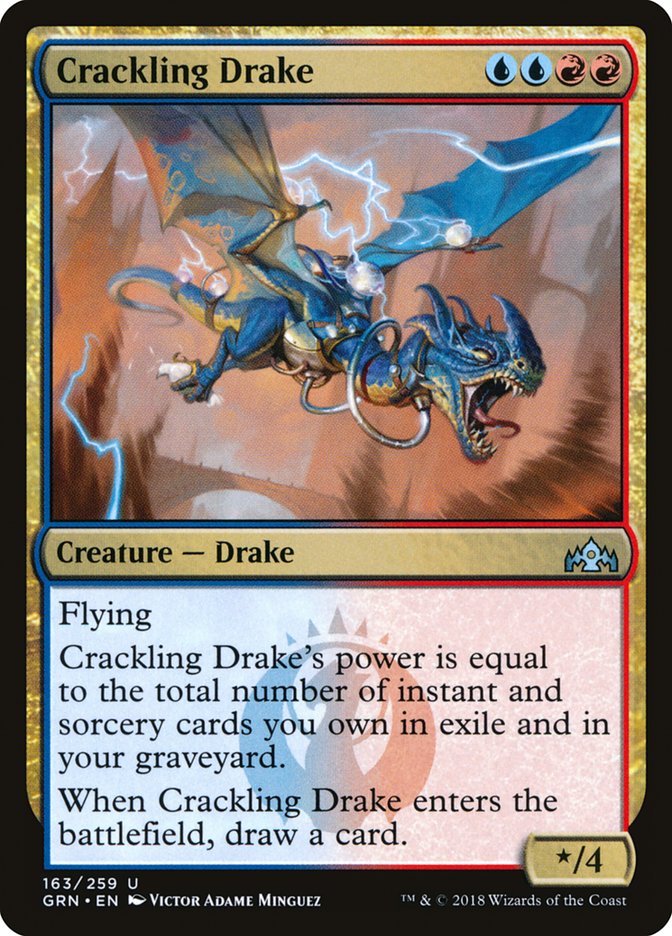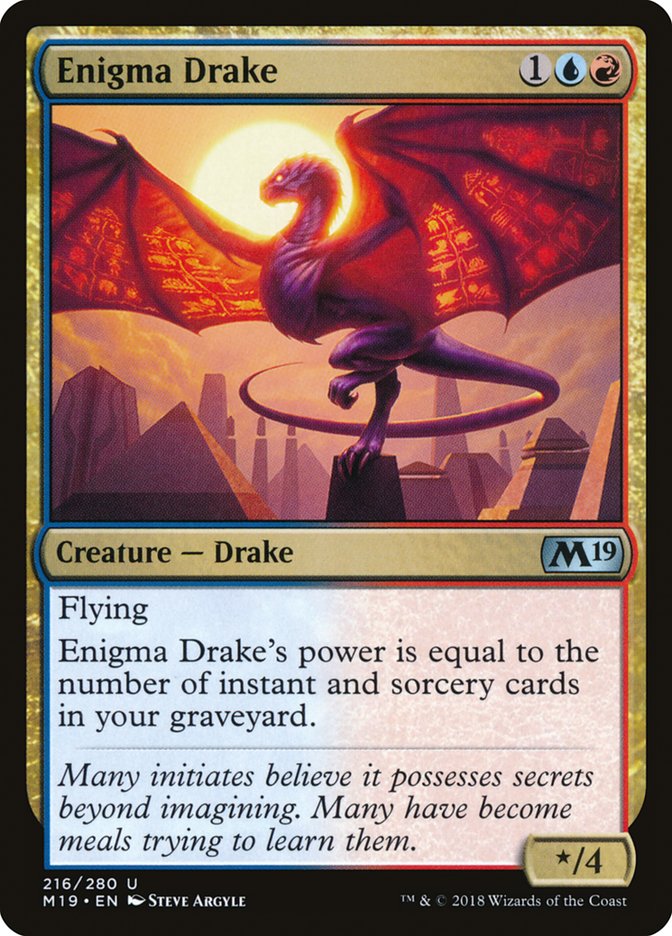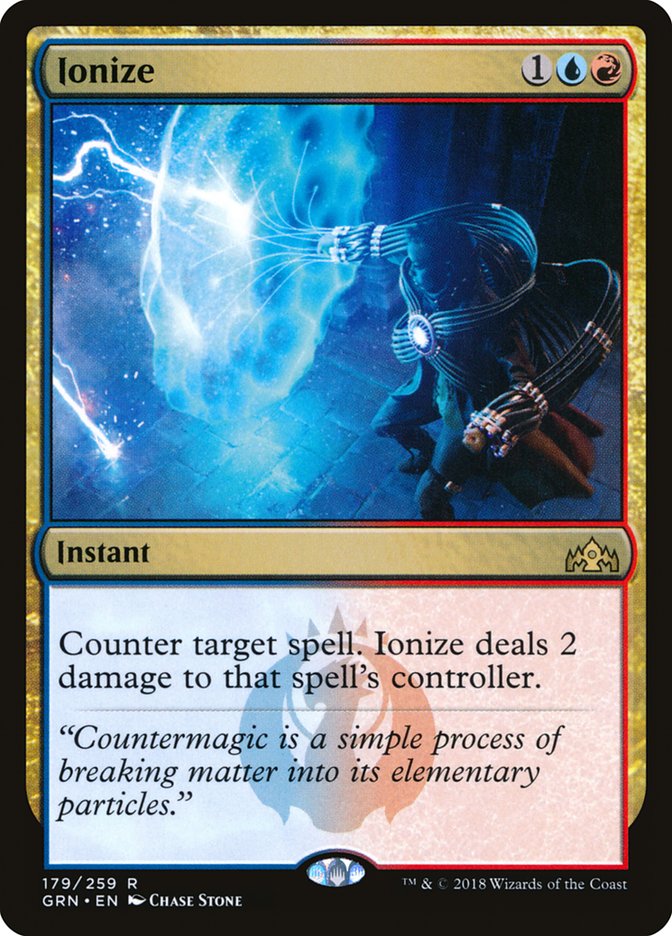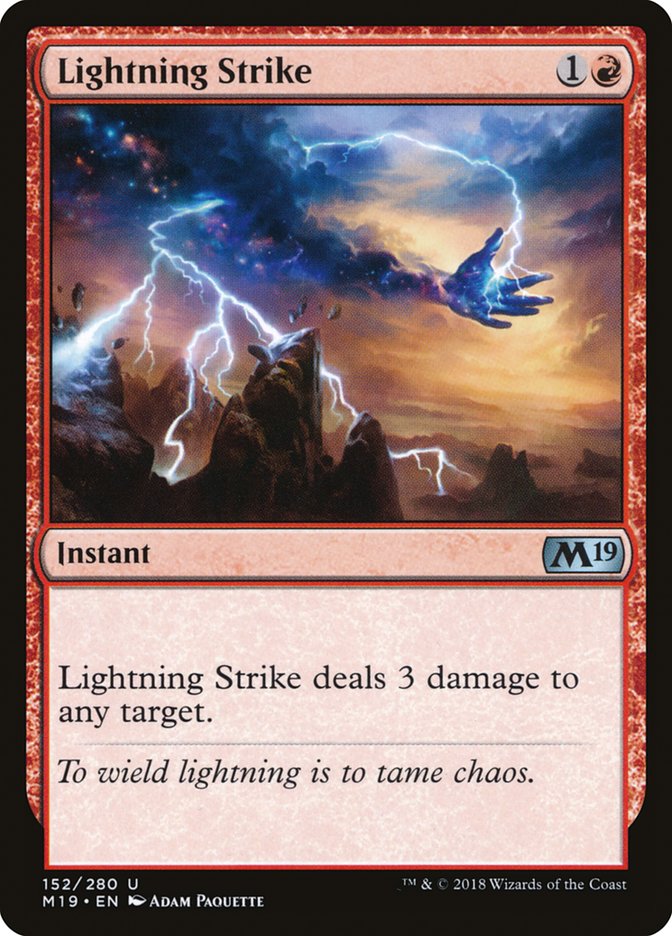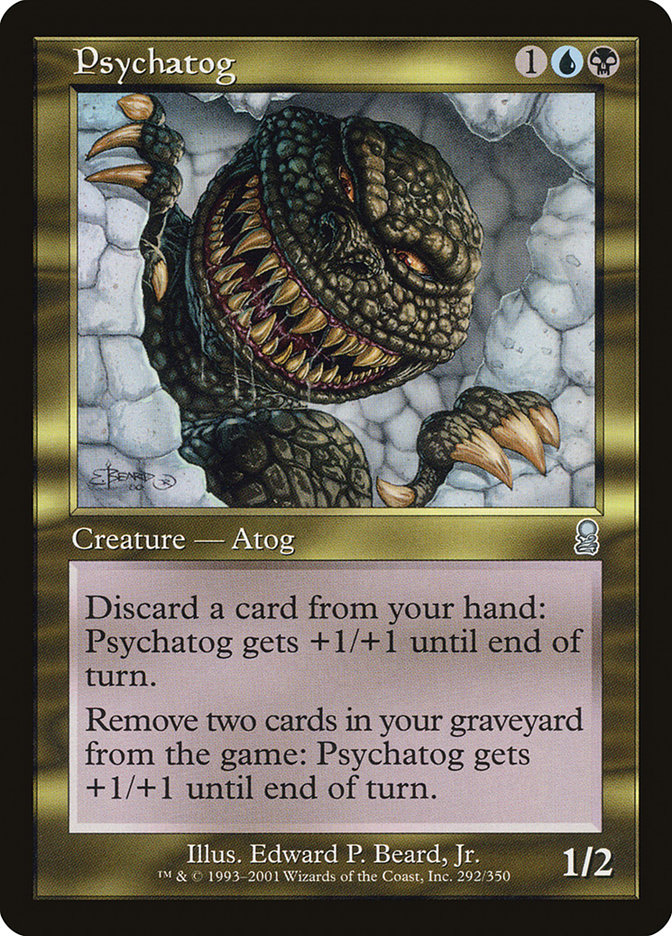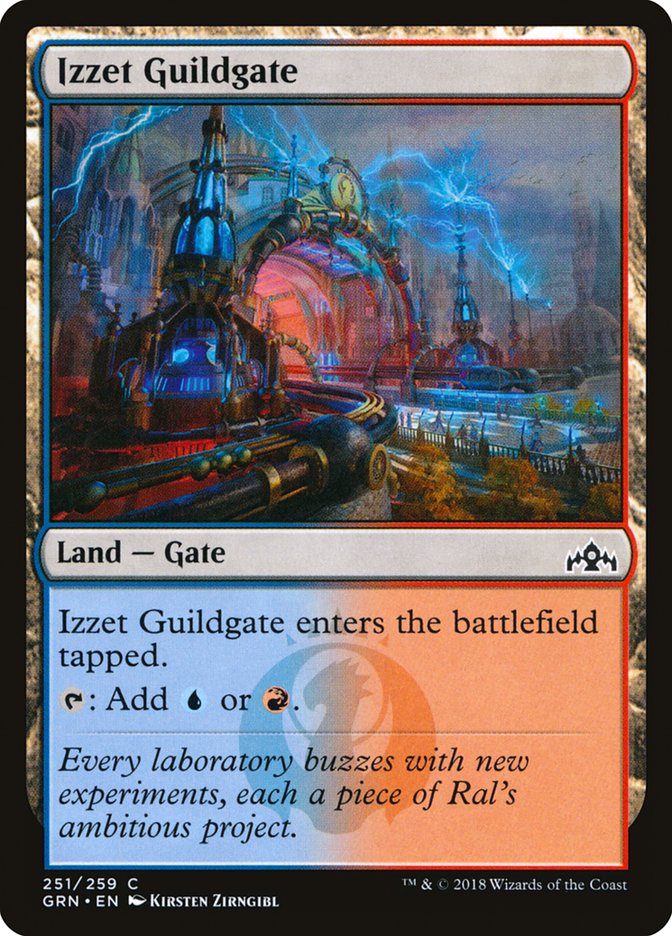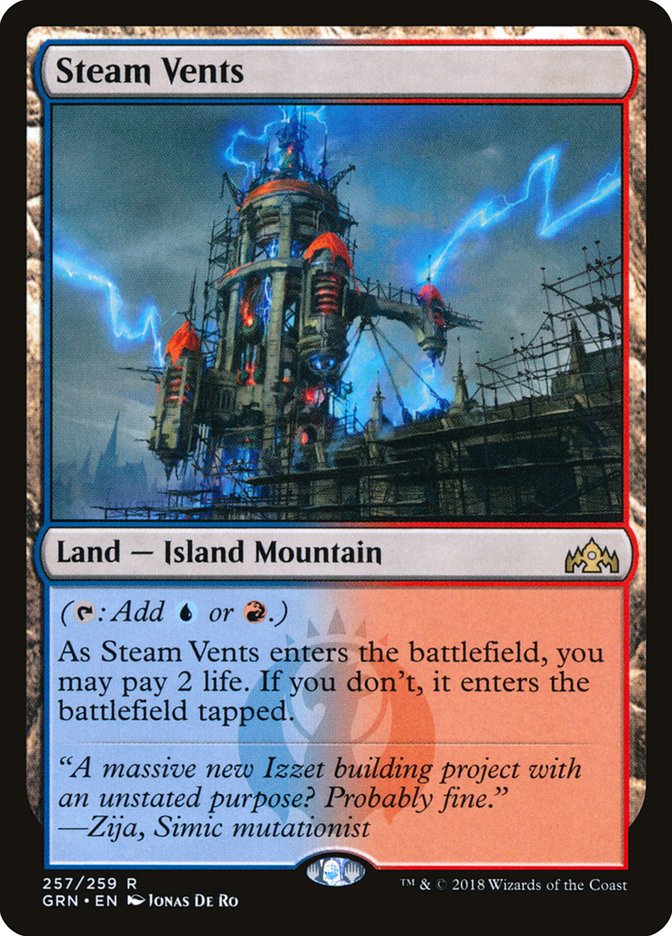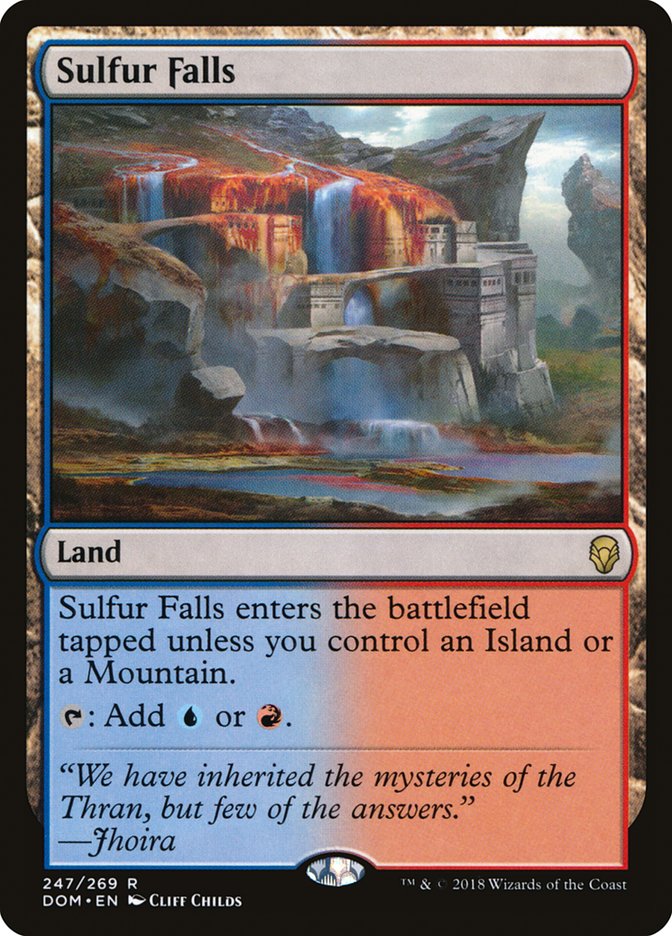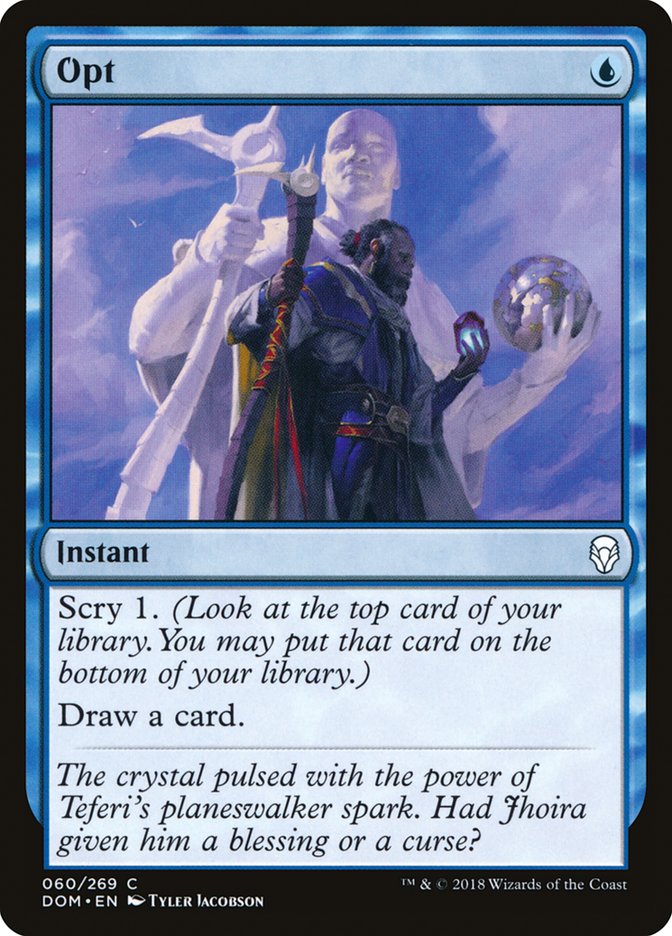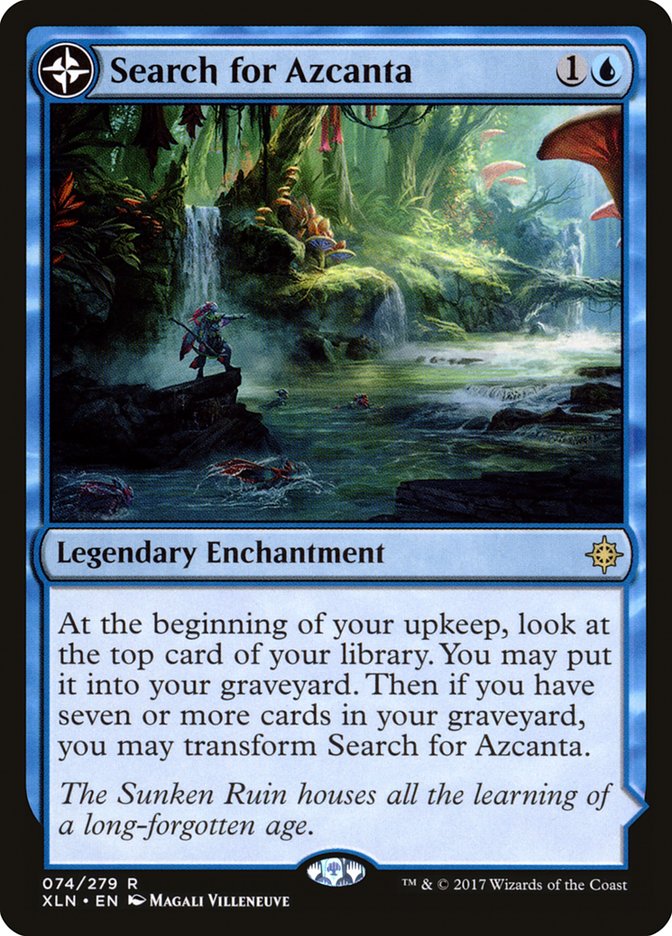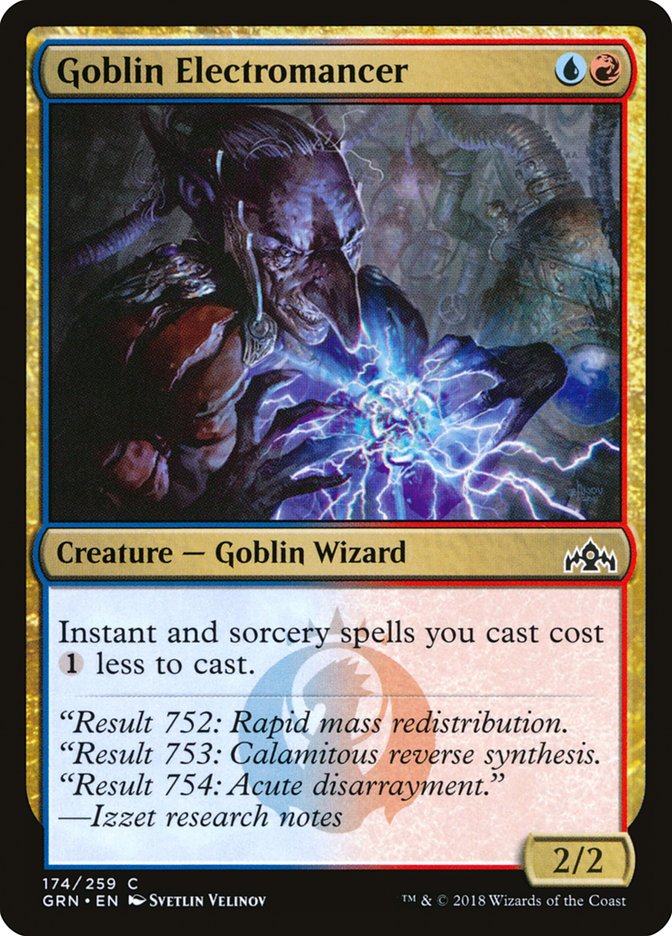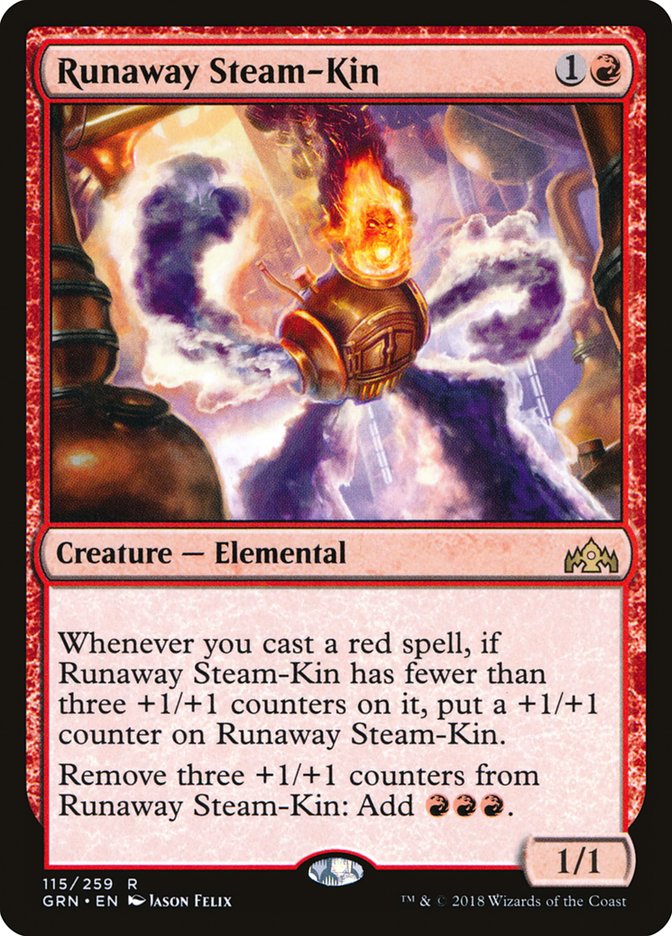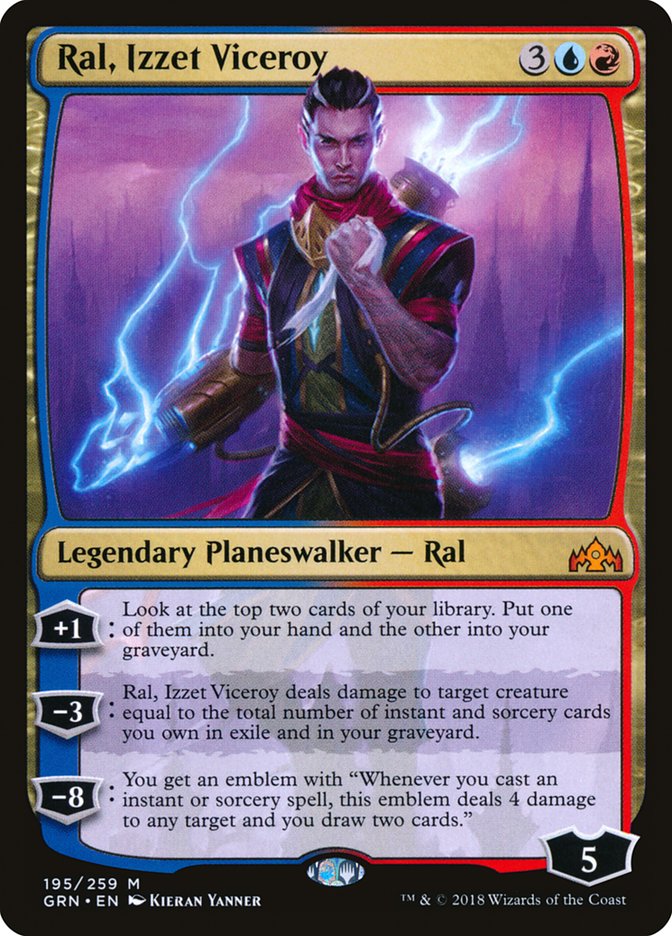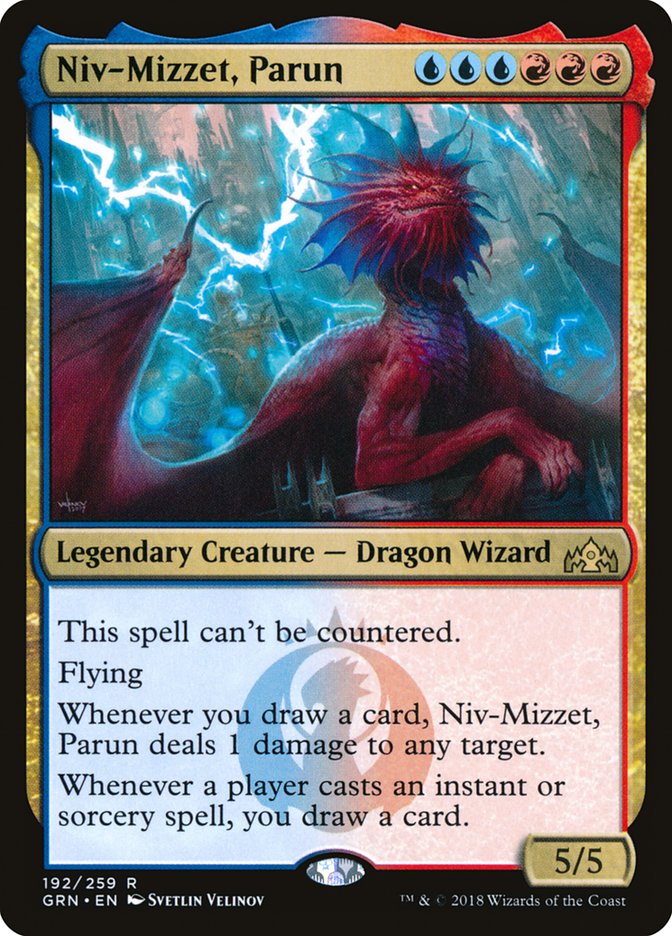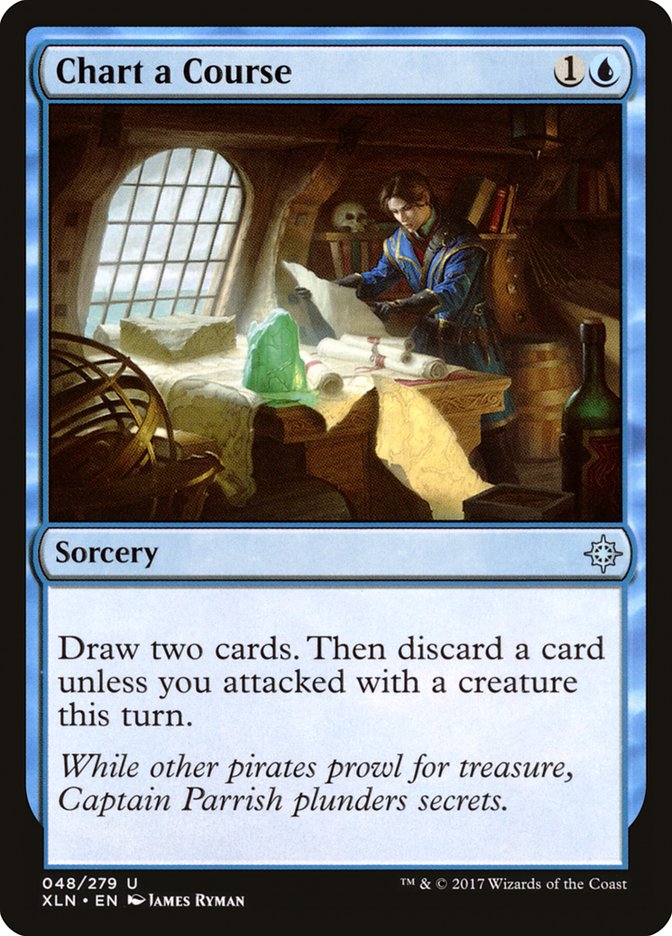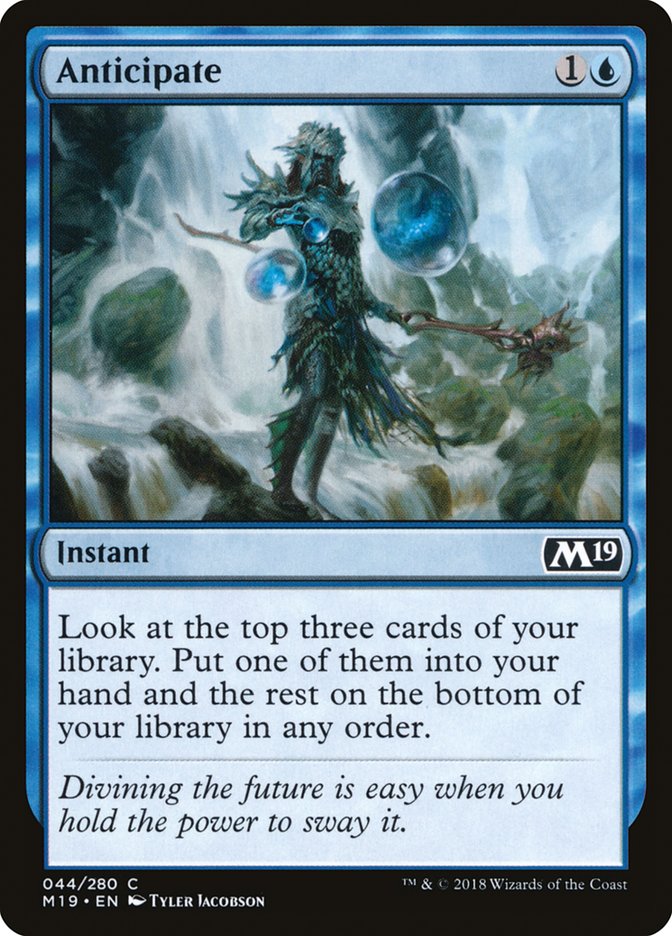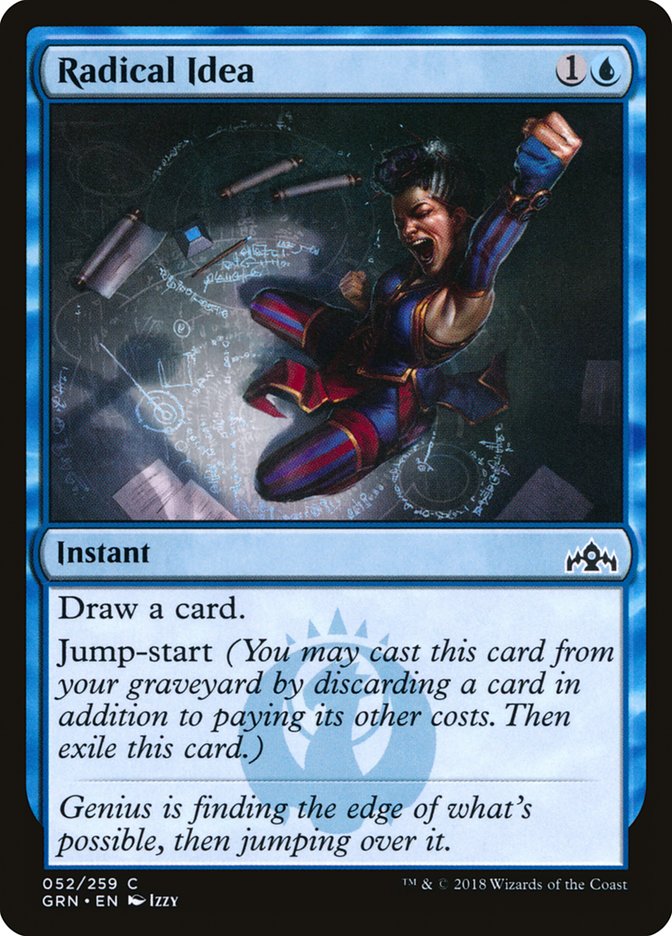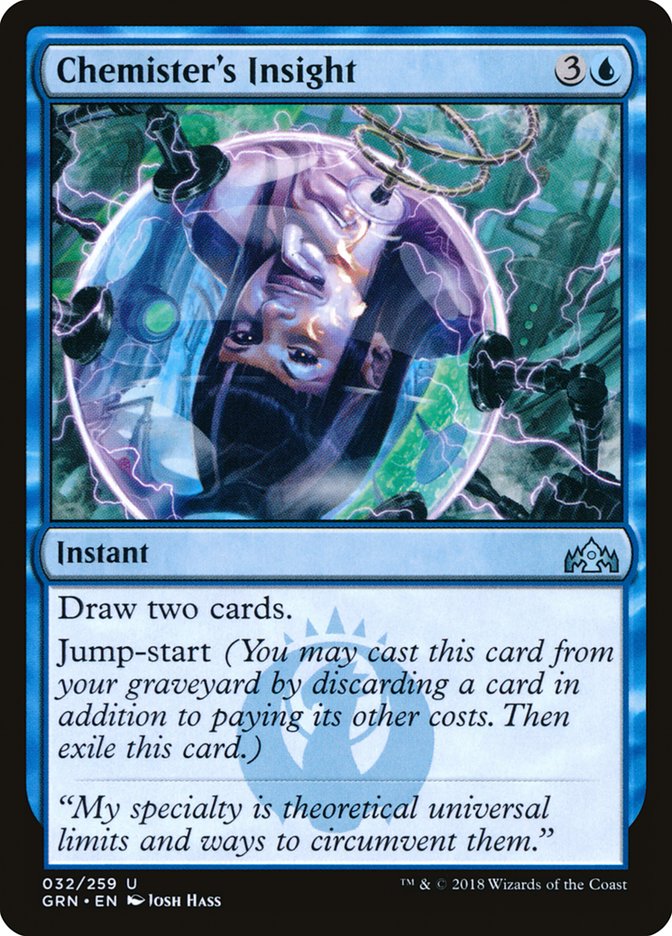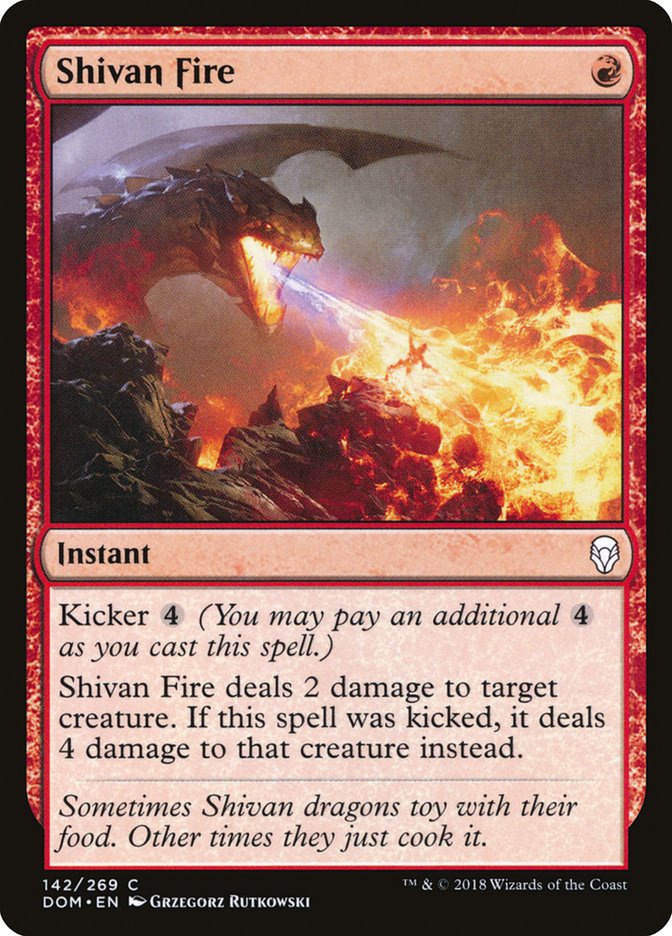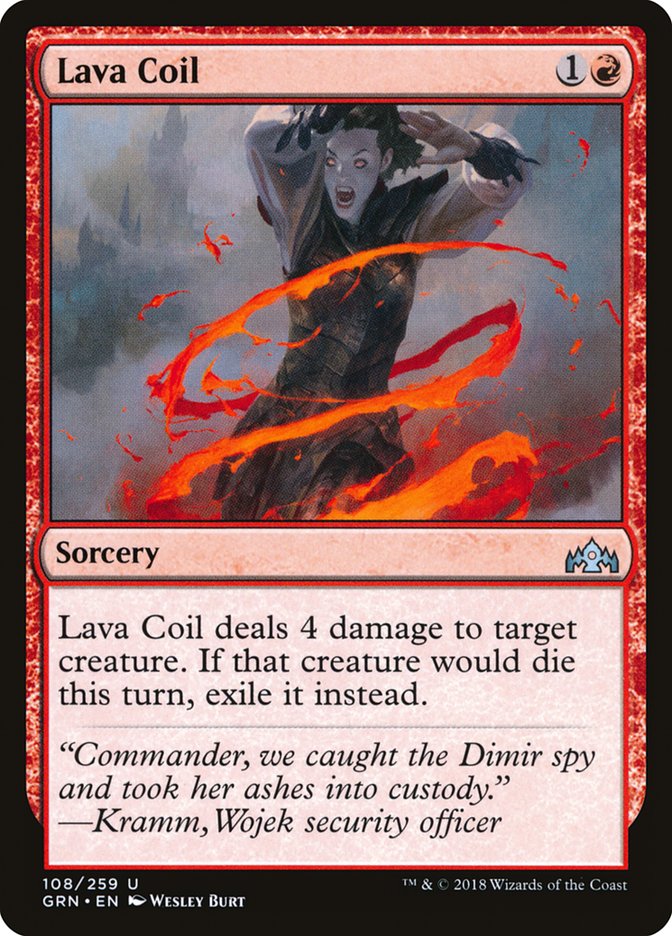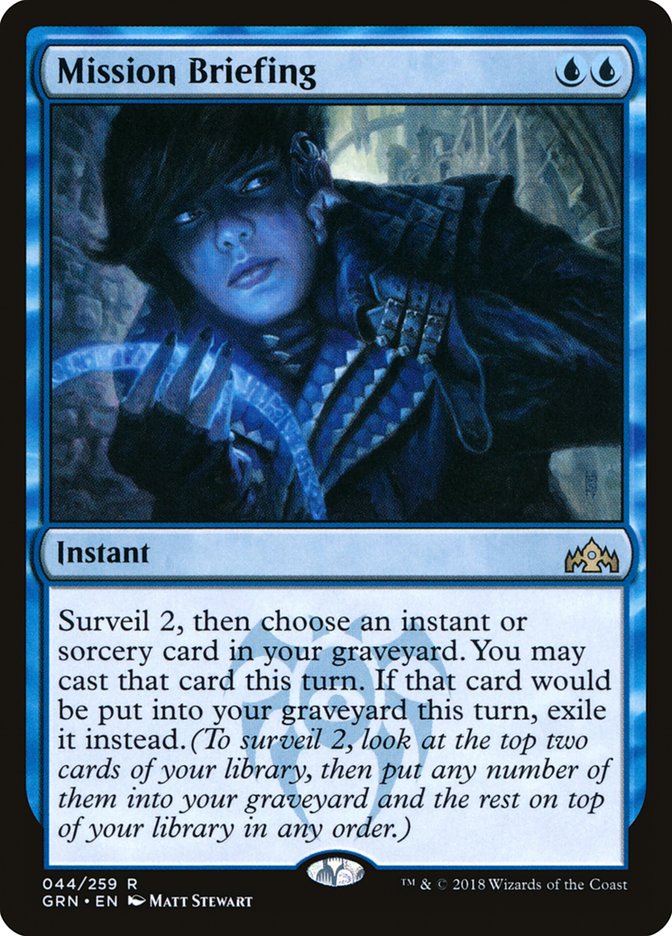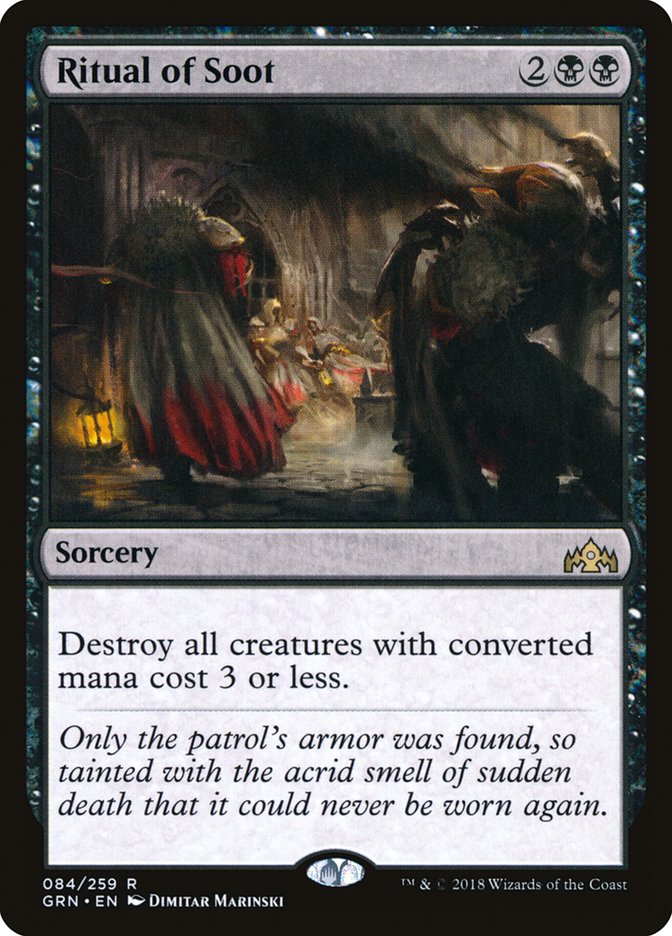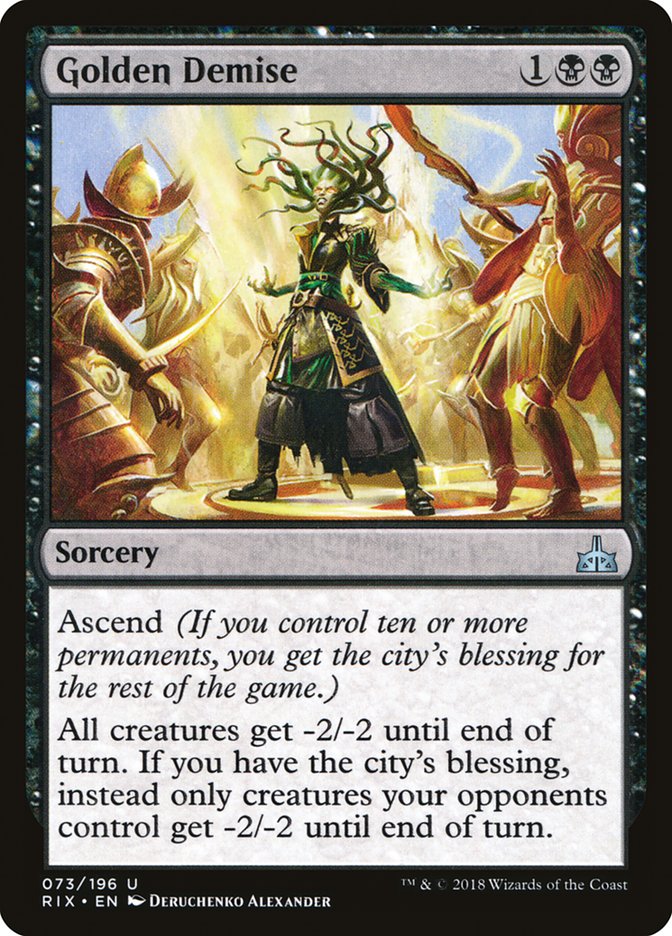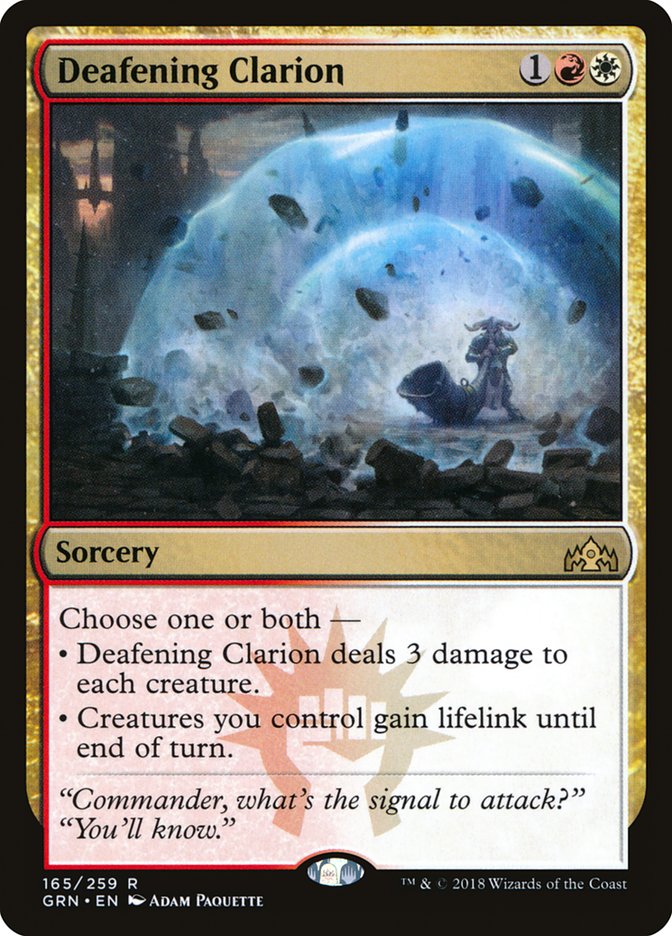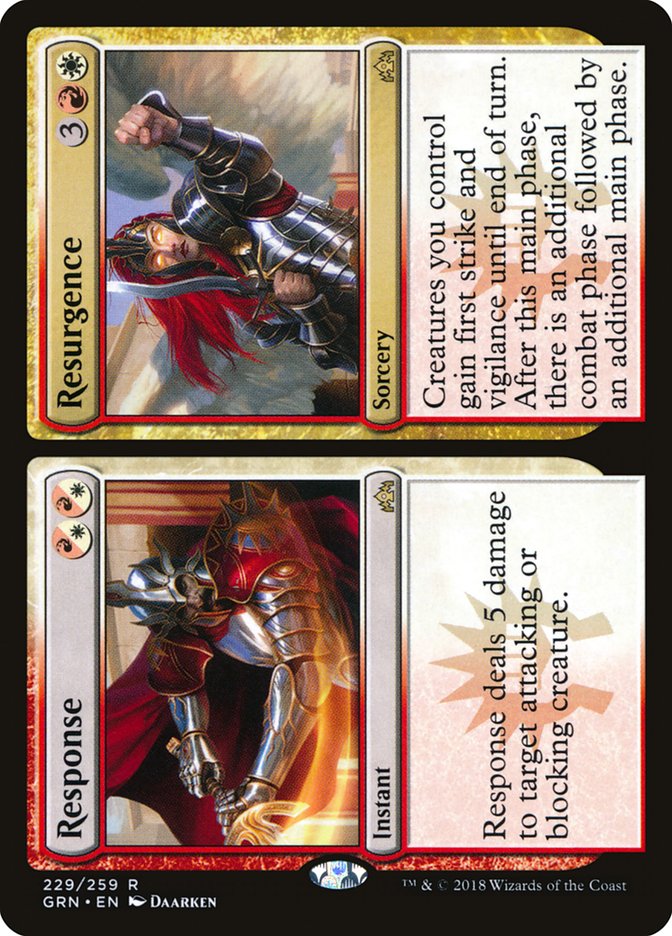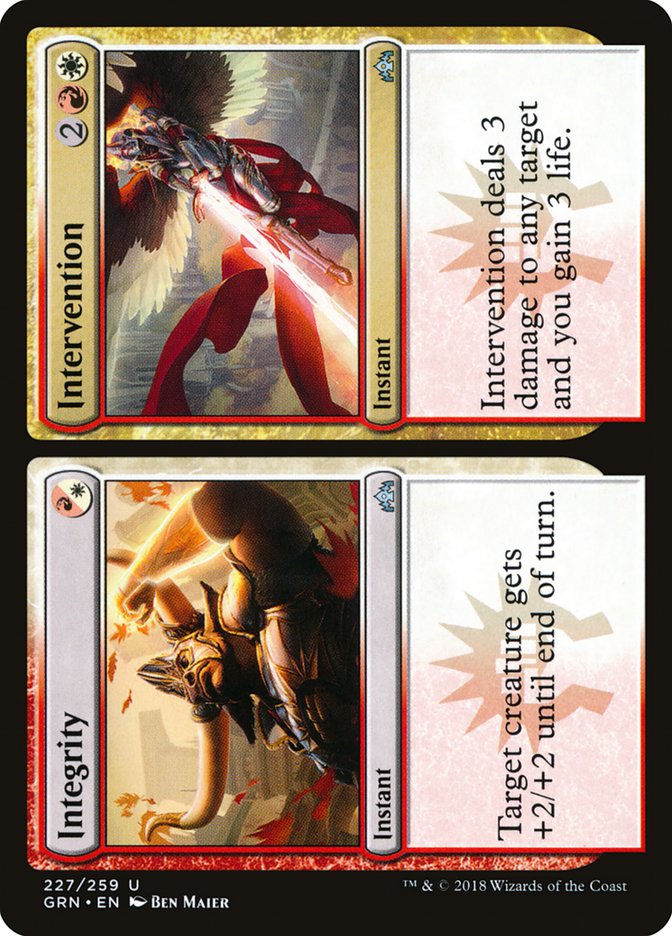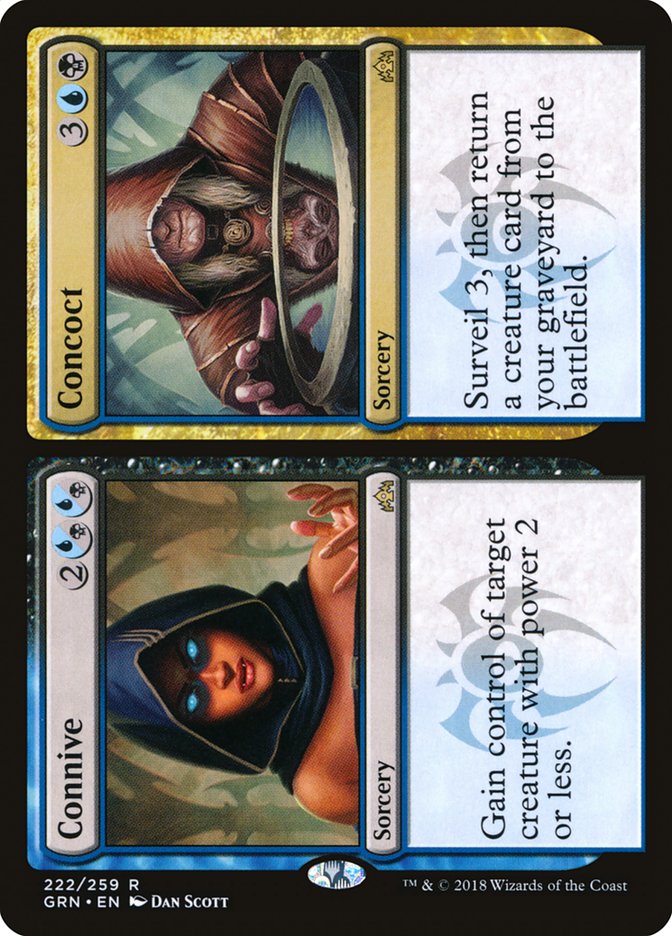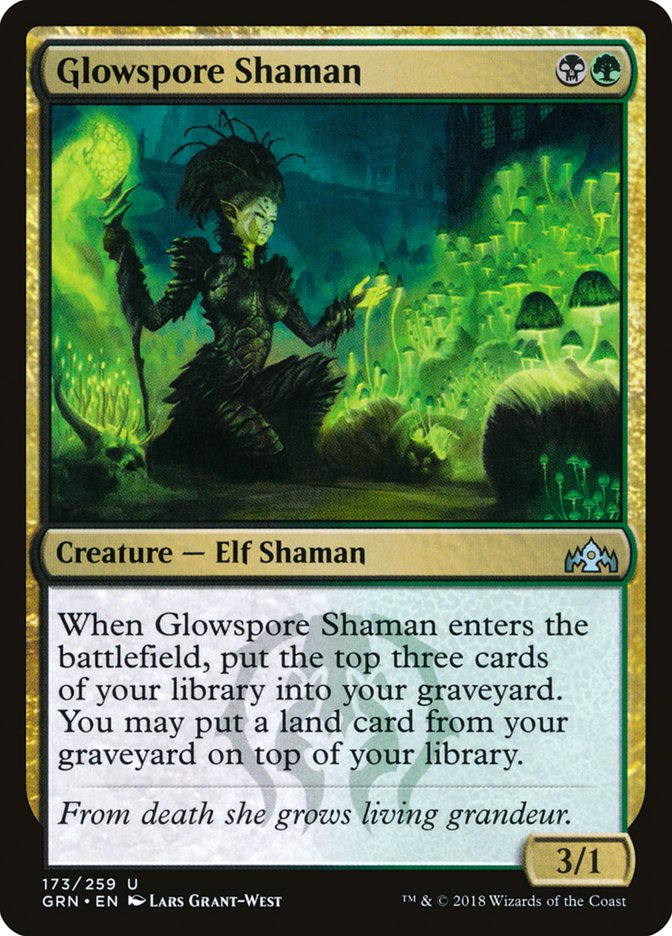I was all set to
come into this week claiming my favorite card in Guilds of Ravnica
was Watery Grave, but I’m not quite so sure any more.
Crackling Drake is real nice.
Card I Want to Play Post-Ravnica:
Gilded
LotusCard I’m Waiting 4 Months
On:Card
I’ll Probably End Up Playing:Steel Leaf
Champion pic.twitter.com/lk1WvkILE7—
Ari Lax (@armlx) September
5, 2018
I was already thinking about the Izzet Spells plan a couple weeks ago. I
listed Deeproot Champion as a card I wanted to play after Stomping Ground
and Breeding Pool are released in Ravnica Allegiance, largely due
to this deck I tested for Pro Tour Ixalan a year ago.
Creatures (12)
Lands (11)
Spells (37)

I just expected to have to wait four months until I was trying things.
I guess to start, I should explain why Crackling Drake and its obvious
partner in crime, Enigma Drake, are great cards. Fortunately it is really
simple.
On turn 3 or 4, these Drakes are a fine rate. Enigma Drake is easily a 2/4
flier for three, and Crackling Drake a 3/4 cantrip flier. That isn’t full
on Steel Leaf Champion rates, but in a format where you’re no longer
comparing every card to The Scarab God or Glorybringer, it holds its own.
An Enigma Drake will hold off most of the low-end creatures, possibly even
forcing a two-for-one to get rid of it.
But on turn 13? Your opponent is going to die in two hits, if not one with
the help of incidental damage.
And there’s a lot of that.
For those of you who were also playing back in the feudal ages of Magic,
this might sound similar to Psychatog. You could cast the card on turn 3
and hold off any attacker, but then if you got to the end game and cast it,
your opponent just died.
If Enigma Drake was already constructed playable for all these reasons, how
good is that effect with an extra cantrip stapled on?
Like I said, Crackling Drake is great.
As always, with a high commitment of multicolored card, my first question
with Crackling Drake is the mana. How am I casting my double blue, double
red spell, and how much can I do beyond that?
Follow up: the odds are very similar for Golgari Findkeeper or
the Dimir equivalent on turn 4. About 4% of the time you can cast a 4 drop
you don’t have GGBB with 26 lands, 12 duals.—
Ari Lax (@armlx) September
13, 2018
The early math is that with four Izzet Guildgate anything is fine, but I
want to explain a bit.
First of all, the important question I was trying to answer was not how
often I could cast Crackling Drake on turn four, but how much more
difficult it was to cast Crackling Drake than some generic four-drop.
There’s a lot of ways to misinterpret math, so I wanted to make sure I was
working with the right baseline.
That means that the math actually doesn’t change much whether I use the 26
lands example from my tweet versus a more likely Izzet 24 lands. You’re
less likely to actually hit your fourth land, and I guess it’s more likely
it’s an Izzet Guildgate which I didn’t crunch numbers on, but when you do
have four lands it’s less likely you have three Islands and can’t cast
Crackling Drake.
Weird.
So, question one: how far can we stretch and still cast Crackling Drake?
Can we trim an Izzet Guildgate or two? Are we locked into Izzet, or can we
stretch for Boros or Dimir on a splash?
Before I do any more math, I think I’m okay being a turn late on Crackling
Drake, but not often and not significantly more. No matter how I configure
this deck it will have enough spells to hang out for a turn then cast the
four-drop. I’m also going to assume the odds are a little better than
whatever I figure out because Opt and mulligans push everything in the
right direction.
Doing the math, it comes out that even with just one Izzet Guildgate and 23
lands, things look pretty good. About one in twelve times you could cast a
four-drop on turn 4, you can’t cast Crackling Drake. This even holds to
slight biases in your blue-red mana split to support early cantrips.
It sounds to me like three colors is well in range but lets start simple.
Izzet Drakes
Okay, so within the first option of Izzet what spells are we playing?
If you put Crackling Drake in your deck, you’re contractually obligated to
play four Opt and four Lightning Strike, and probably two if not three
Search for Azcanta. It gets a bit less clear from there.
I’m not a huge fan of any of the other Izzet spell payoffs as threats. The
low drops are not carrying their own weight in terms of ending the game,
which goes against the spells and whammies plan Crackling Drake is trying
to play. There might be a Storm-esque deck somewhere, but that deck is far
from maximizing Drakes in the short turn. I’m in to try some of the high
drops though. I don’t have the highest hopes for Niv Mizzet, Parun as it
seems win more to “go off” when you untap with a six-drop on the
battlefield, but Ral, Izzet Viceroy is promising as a larger kill spell and
a threat that dodges Cast Down style removal. At least, that is if removal
these days isn’t just Vraska’s Contempt, Conclave Tribunal, and Assassin’s
Trophy that kills anything you want.
Crackling Drake decks are definitely interested in spinning their card
drawing wheels for fun and profit. Your options beyond Opt things break
down into cheap selection and longer game card filtering.
I would like to just compare Radical Idea and Chart a Course head to head.
One of these cards you invest two mana to actually do nothing, then another
two mana to discard before you draw. The other just lets you spend two
mana, discard after you draw, and sometimes just keep all the cardboard.
You can get minor self-mill value here, but honestly Radial Ideal is so bad
when drawn I would want to be a dedicated self-mill deck before I played
it.
I’m a fan of Chemister’s Insight as it actually puts you up cards at an
acceptable rate. If you get into any sort of long game, this card is going
to let you beat your opponent on raw volume especially given Crackling
Drake is also a cantrip. I’m going to start at four copies just for the
sake of trying the new card more, but two or three is a likely optimal
number.
The question then becomes how much card selection you want. The future
Temur lists with Deeproot Champion are going to want a ton, but the current
Crackling Drake setups just don’t need the density. You aren’t worried
about spamming a bunch of spells in a turn after you land your threat. You
just want to do stuff, then eventually Crackling Drake will be stupidly
big. I’m also unsure your spell curve can be low enough to support
multi-spell turn 3s with a non-Opt cantrip, which pushes you towards a more
normal 24 lands.
Beyond the obvious Lightning Strike, what answers do we want?
Given my constant proclamations that [card name="Goblin Chainwhirler"]Goblin Chainwhirler[/card] and Steel Leaf
Champion are just the most important cards in the format,
I want to bias towards slightly larger removal. Lava Coil seems excellent
as it one-shots Rekindling Phoenix. I’m undecided between Shock and Shivan
Fire, as despite Shivan Fire being a better card going late you have plenty
of ways to filter away dead Shocks, and I’m interested in teaming that card
up with Lightning Strike to kill a Teferi, Hero of Dominaria. Blink of an
Eye is a flex option that I’m largely unexcited about until someone shows
me a Heart of Kiran-esque issue where you need to handle a non-creature
threat at tempo parity in the early game.
There’s also this gem from the
Korean Magic Facebook
page:
1UR
Sorcery
Deal damage to target creature equal to the number of instants and
sorceries you own in exile and your graveyard.
Jump-start
I can’t imagine playing four of this card just due to clunkiness concerns
and the fact it overlaps with Ral, Izzet Viceroy, but it solves a lot of
issues I was having with the first sketches of the Izzet deck. It’s a
removal spell that doesn’t cap on size and can handle multiple things if
you end up a bit behind later on.
In the countermagic department, I definitely want Essence Scatter to keep
the mana curve down. As for which three mana counterspell, I’m really
unsure. In theory, the mana should support Sinister Sabotage, but I have no
idea if the surveil is actually better than two damage in this shell. May
as well start with a split. Disdainful Stroke may also deserve a spot to
keep the number of three mana counters down.
(The below list is short one copy of whatever the Korean card’s name is.)
Creatures (6)
Planeswalkers (2)
Lands (10)
Spells (41)

It’s worth a quick stop to say that I’m really not a fan of Mission
Briefing. I thought this deck might be a reasonable home for a copy or two,
but I quickly realized that you already had enough great late game action
and three drop answers that you were more concerned with making sure you
had interaction early. It comes down to Mission Briefing against
Chemister’s Insight as the later game card selection spell, and when one of
those is a great piece of card advantage and graveyard payoff and the other
is just a Flood of Recollection, it was an easy choice.
Other Colors
My issue is this deck has no way to catch up. One for one removal against
aggro often leaves you a tick behind going into the mid-game, and even if
Crackling Drake is a 7/4 flier, it isn’t The Scarab God or Torrential
Gearhulk that stunts multiple threats.
Even if Rain of Notions sounds really awesome, I can’t see branching into
Dimir and Grixis being the best choice. The black sweepers costs double
black, and we aren’t remotely close to supporting that and Crackling Drake.
Going to Boros for a Jeskai deck on the other hand looks great.
Deafening Clarion seems custom made for this strategy. Your Drakes force
overextension into the sweeper and survive it, and then the lifelink bonus
clause has a game-swinging impact.
Adding white also provides the “fun and original” gameplan of Teferi, Hero
of Dominaria plus Search for Azcanta. The thing I’m excited to do is
actually block a creature directed at my absurd planeswalker.
The question then becomes how many white sources you need and how to afford
them. Sacred Foundry is a no brainer, and that makes Glacial Fortress
almost free with eight duals and three or four basics to check with it.
Clifftop Retreat is a bit dicier. You have eight duals, but each Clifftop
Retreat cuts the number of basics real fast.
There’s two solutions to this. The 2012 Return to Ravnica solution
was just play all the Clifftop Retreats and accept your mana was tapped.
The solution I think I prefer in 2018 is utilize card filtering, skimp on
white sources a bit, and have untapped mana. Esper Control pre-rotation
gets away with twelve white sources, and I think Opt and other cantrips let
this deck operate on ten or eleven.
Creatures (4)
Planeswalkers (3)
Lands (19)
Spells (34)

You’re trying to do about the same thing as the Izzet shell, but Teferi,
Hero of Dominaria is just good enough that Enigma Drake is no longer a
needed part of winning the game. Keep the cantrip threat, leave the rest.
Ionize is also a little more exciting as weird tapped land configurations
and less Izzet Guildgate make double blue for Sinister Sabotage a little
less reliable, and Disdainful Stroke definitely makes the maindeck with
Teferi untapping two lands for it.
Response is a card I’m excited to try out with a creature that actually
connects for solid damage. The Izzet list could also end up playing it just
for Response if it wanted a way to deal five damage to a creature. I’m not
interested in Integrity as the four mana Lightning Helix rate just isn’t
cutting it. A deck would really need the Giant Growth side to do work for
that card to make the cut.
The Rest of the Crew
Today’s probably under the radar card is Golgari
Findbroker. There’s a lot of asking going on with the cost, but
this is a real 3/4 body on your clean 2-for-1. pic.twitter.com/gKwPm2Ek5Y—
Ari Lax (@armlx) September
12, 2018
While Crackling Drake might be the clear best of the cycle, the rest of
these double-guild cost creatures all look great. Realizing via Crackling
Drake that a light splash doesn’t actually make casting them impossible has
me even more excited to try out the rest.
While Brad Nelson
loves Golgari and seems to disagree,
I’m most excited to start with the value of Golgari Findbroker. Maybe he
just didn’t know about District Guide at the time, but Gerry Thompson
is right about how important that card is going to be.
Despite them not being permanents, I’m sure Golgari Findbroker would love a
pairing with Rain of Notions, Connive, and even just sideboard Negate or
Disdainful Stroke. If The Eldest Reborn is going to be exciting in new
Standard, let me tell you what card works really well with it…
I want to see a little bit more of the self-mill enabling before going down
the Golgari path, but there’s a lot waiting to be figured out. Despite the
same manabases as Return to Ravnica, I’m now interested to see
what new shells can be incentivized by some wild new mana costs.


